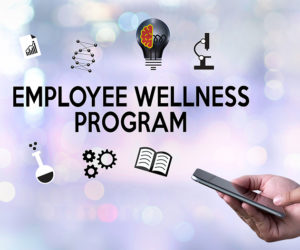
Sorry, your browser is not compatible with this application. Please use the latest version of Google Chrome, Mozilla Firefox, Microsoft Edge or Safari.
Workforce Management content

Icebreaker Collaboration Effort U.S. National...
This national workforce development plan outlines how the United States will build and sustain the skilled labor needed to design and construct polar icebreakers domestically. Developed in coordination with international…
Learn More


Leadership and Our Army Profession
Leadership remains the heart of the Army Profession, especially as today’s strategic environment grows more complex, fast-moving, and technologically driven. This article explores why leaders must blend character, technical expertise,…
Learn More


NCOs and Warrants
Strong relationships between NCOs and warrant officers shape how Soldiers learn, train, and grow across the Army’s institutional, operational, and self-development domains. This article illustrates how collaboration between these two…
Learn More


Virginia’s Community Colleges and the Changing...
Virginia’s community colleges are navigating a pivotal shift as student preferences lean heavily toward online learning and short-term workforce-focused training. While flexible asynchronous courses have expanded access, evidence shows students…
Learn More


Workforce and Industry Incentives Economic...
Virginia continues to refine how it supports workforce development and key industries, focusing on programs that help attract and grow businesses while improving worker skills. This review highlights the effectiveness…
Learn More


Workforce Program Review
Indiana’s Workforce Program Review highlights how targeted support can help more young people and individuals with disabilities succeed in school and enter competitive, sustainable employment. The analysis shows that programs…
Learn More


Leadership Framework for an Agile Government
This report, published by the IBM Center for The Business of Government in June 2025, presents a comprehensive framework for cultivating leadership that enables agility, innovation, and adaptability in public…
Learn More


Centenarians: 2020
The Centenarians: 2020 report offers an in-depth look at Americans aged 100 and older, revealing that 80,139 people reached this remarkable milestone according to the 2020 Census. It examines trends…
Learn More


GenAI and the Future of Government Work
This report explores how generative AI is reshaping the public sector workforce, from accelerating routine tasks to transforming how agencies deliver services. It examines the balance between innovation and responsibility,…
Learn More


Employee Wellness Guidance
This guide from the U.S. Department of Justice’s COPS Office and Georgetown Law’s Center for Innovations in Community Safety provides a comprehensive framework for promoting wellness within law enforcement agencies.…
Learn More


USDA Safety Manual
This Safety Manual from USDA’s Specialty Crops Inspection Division provides clear, practical guidance to keep inspectors safe across diverse work environments—from warehouses and rail yards to laboratories and cold storage…
Learn More


Unemployment Insurance, Wage Pass-Through, and...
This research explores how expanded unemployment insurance during COVID-19 impacted worker behavior. The authors find that while higher benefits modestly increase reservation and re-employment wages, the biggest shift comes from…
Learn More


Business Owners and the Self-Employed: 33 Million...
Self-employment is far more widespread than traditional labor surveys suggest, with over 33 million Americans operating nonemployer businesses. The paper analyzes IRS tax data to track how people move between…
Learn More


The Federal Response to Teacher Shortage Impacts...
This report explores how declining teacher pipelines, rising attrition rates, and pay disparities are reshaping the nation’s education workforce. It highlights how shortages vary across regions and subjects, with high-poverty…
Learn More


Pay Freeze for Certain Senior Political Officials...
As Congress considers next steps on appropriations, agencies are being directed to maintain frozen pay rates for certain senior political officials. OPM advises that the previously established freeze should remain…
Learn More


